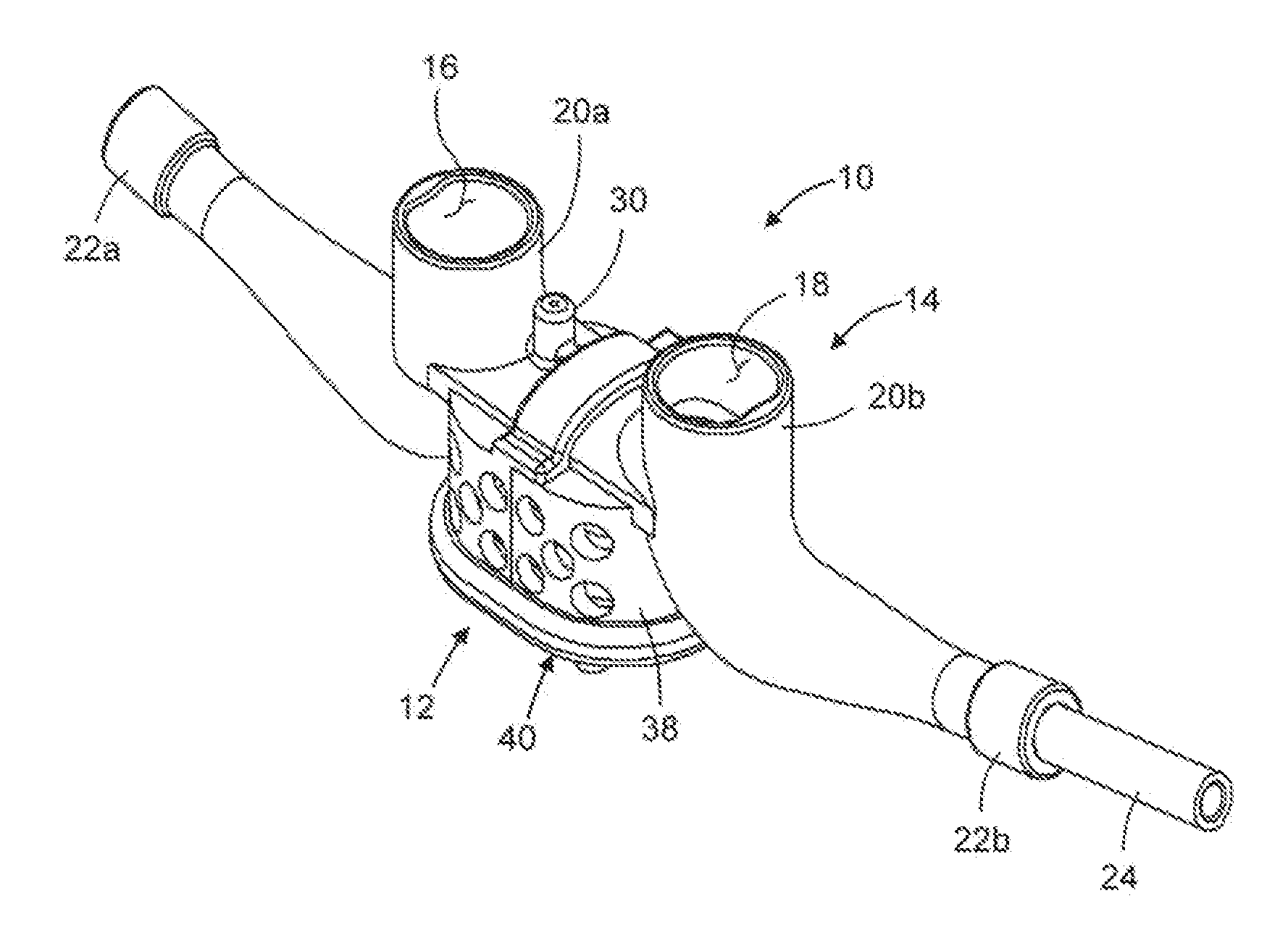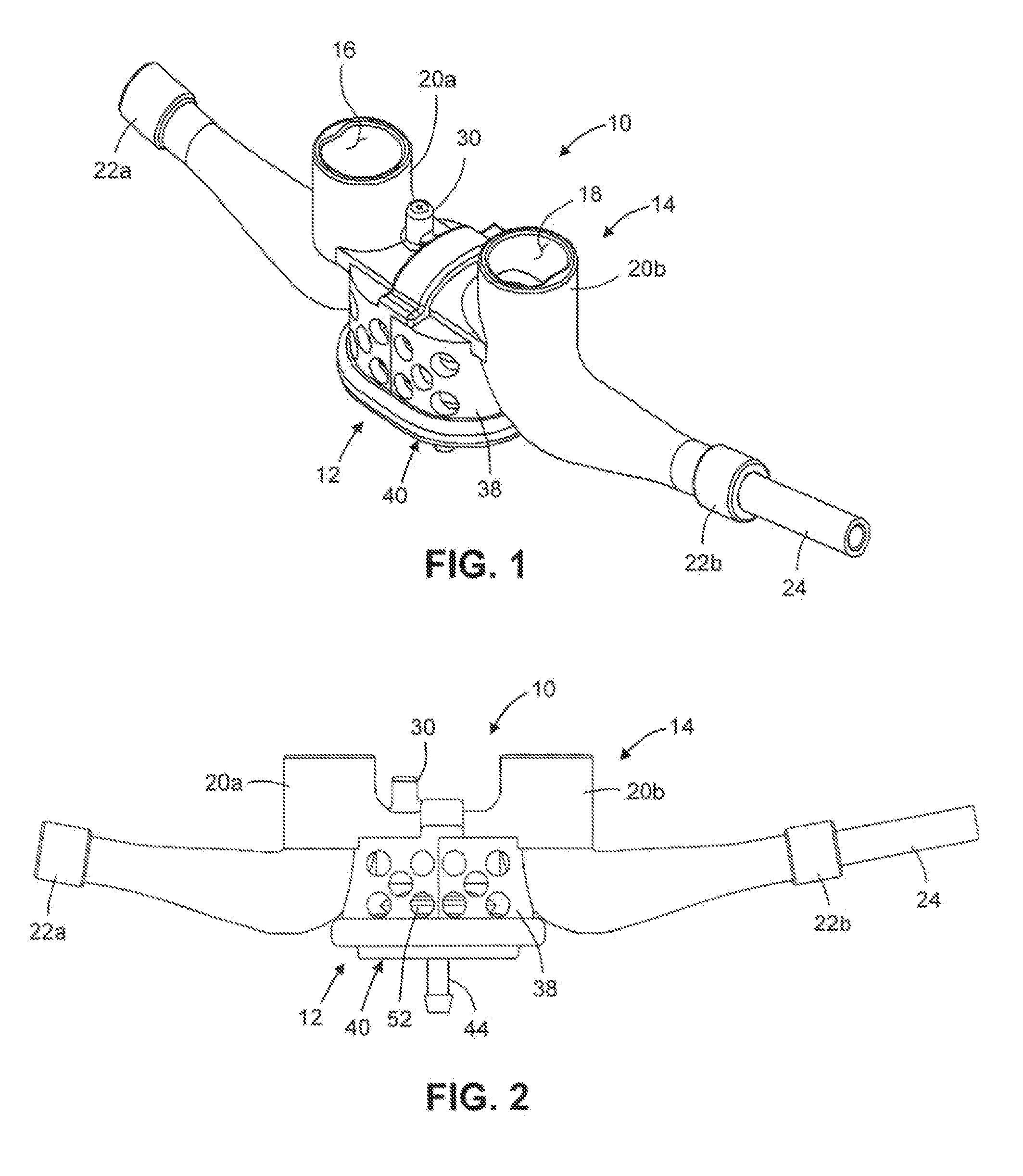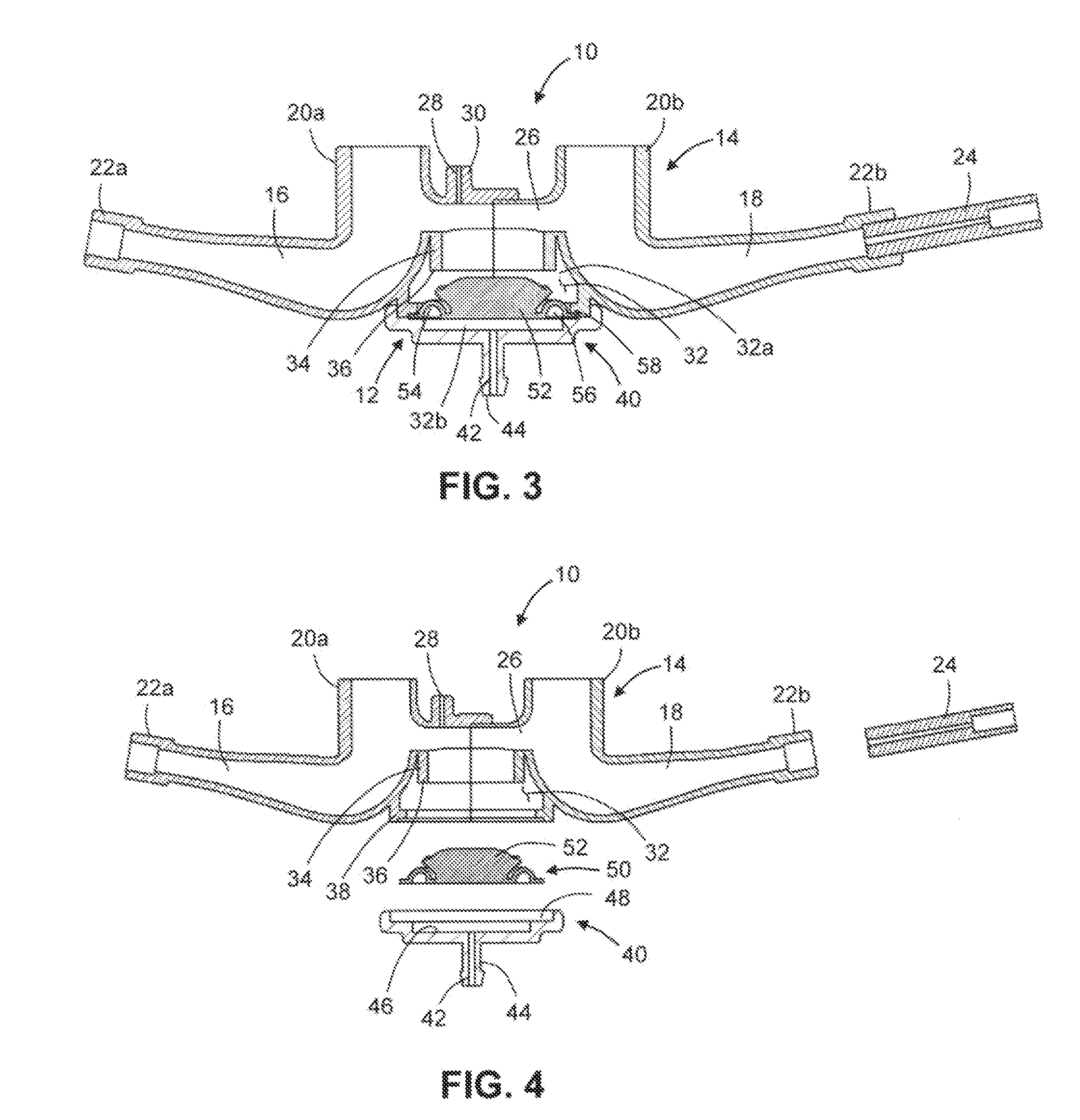Ventilation Mask with Integrated Piloted Exhalation Valve And Method of Ventilating a Patient Using the Same
a technology of exhalation valve and ventilation mask, which is applied in the field of ventilation mask, can solve the problems of high non-compliance rate and high non-compliance rate of cpap therapy, and achieve the effects of reducing noise generated by the mask, preventing patient discomfort, and alleviating patient discomfor
- Summary
- Abstract
- Description
- Claims
- Application Information
AI Technical Summary
Benefits of technology
Problems solved by technology
Method used
Image
Examples
first embodiment
[0028]Referring now to the drawings wherein the showings are for purposes of illustrating various embodiments of the present invention only, and not for purposes of limiting the same, FIGS. 1-4 depict a ventilation mask 10 constructed in accordance with the present invention. The mask is depicted as a nasal prongs mask, however those skilled in the art will recognize that other ventilation masks are contemplated herein such as nasal pillows masks, nasal masks and oronasal masks and for purposes of this application the term mask and / or ventilation mask will include all such mask structures. Additionally, for purposes of this application, the term “direct nasal interface mask” will be deemed to encompass those masks which are configured to facilitate the direct introduction of therapeutic fluid pressure into the nostrils of a patent, such masks including, but not being limited to, nasal pillows masks, nasal prongs masks, and nasal cradle masks. The mask 10 includes an integrated, diap...
second embodiment
[0045]Referring now to FIGS. 5-9, there is shown a nasal pillows mask 100 constructed in accordance with the present invention. The mask 100 includes an integrated, flapper-implemented exhalation valve 112, the structural and functional attributes of which will be described in more detail below.
[0046]As seen in FIGS. 5-9, the mask 100 comprises a housing 114 which defines first and second fluid flow passages 116, 118. As seen in FIGS. 8 and 9, the flow passages 116, 118 are formed within the housing 114 to have substantially identical shapes or contours. As with the first embodiment of this invention, a single flow passage is additionally expressly contemplated herein. In the mask 100, one end of each of the flow passages 116, 118 is defined by a respective one of an identically configured pair of generally cylindrical, tubular protrusions 120a, 120b of the housing 114. The opposite end of each of the flow passages 116, 118 is defined by a respective one of an identically configured...
PUM
 Login to View More
Login to View More Abstract
Description
Claims
Application Information
 Login to View More
Login to View More - R&D
- Intellectual Property
- Life Sciences
- Materials
- Tech Scout
- Unparalleled Data Quality
- Higher Quality Content
- 60% Fewer Hallucinations
Browse by: Latest US Patents, China's latest patents, Technical Efficacy Thesaurus, Application Domain, Technology Topic, Popular Technical Reports.
© 2025 PatSnap. All rights reserved.Legal|Privacy policy|Modern Slavery Act Transparency Statement|Sitemap|About US| Contact US: help@patsnap.com



